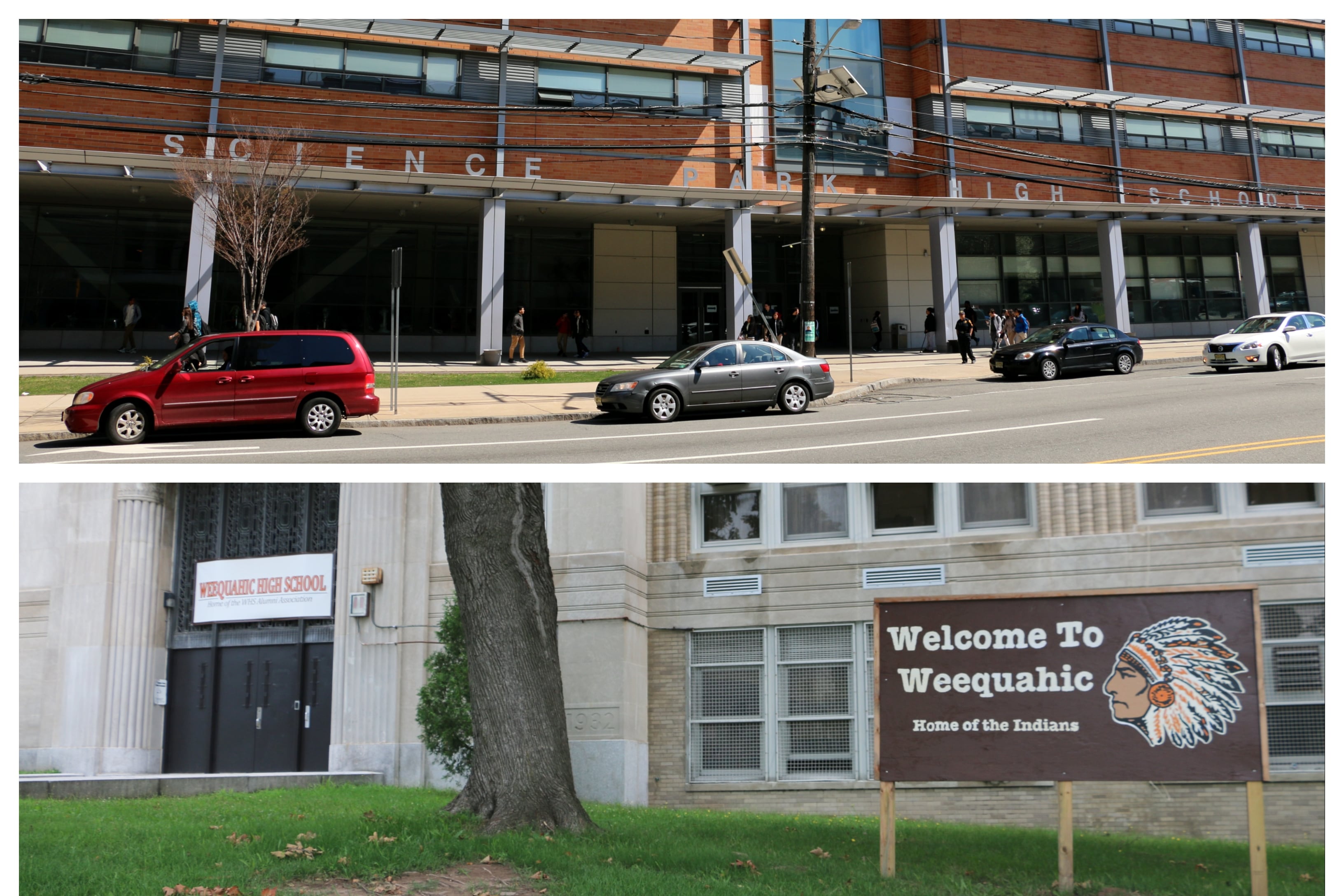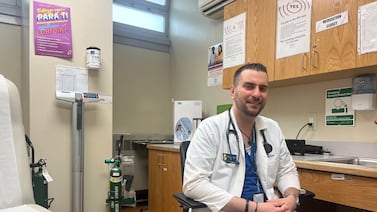Newark’s public high schools are split into starkly unequal camps, with thriving magnet schools for a select group of students and struggling open-admissions schools for the rest, district data show.
At Technology High School, for instance, more than 70% of students met state standards in math in 2019 and 100% of students graduated last school year. Meanwhile, at Weequahic High School, 0% of students met math standards and just 75% earned diplomas, according to the data.
What separates the schools is that Technology is a selective magnet school that gets to choose its students, while Weequahic is a comprehensive school that must admit anyone who applies.
The district’s admissions policies have created a two-tiered system where each set of schools serves different groups of students and attain wildly different results, according to the recently released data. In general, the six magnet schools enroll far fewer students with special needs and boast much higher test scores, graduation rates, and college-enrollment rates than the six comprehensive schools, the data show.
Superintendent Roger León has set out to reform the comprehensive schools, yet the pandemic has further strained them. Absenteeism rates skyrocketed at four of the comprehensive schools this September, while the rates declined in all but one of the magnet schools.
“We can’t keep having this disparity — it’s just not right,” said Wilhelmina Holder, a Newark education advocate who leads the district’s high school parents council.
When half the high schools can handpick their students and half cannot, “of course that’s going to create a disparity,” she added. “That’s common sense.”
Open to everyone, the comprehensive schools offer general courses alongside vocational programs. They also provide bilingual and special education services. At four of the schools, 20% or more of students have disabilities; at Barringer and East Side, more than 30% of students are still learning English.
By contrast, the magnet schools serve relatively few students with special needs. Intended for high-achievers, they admit students based on grades, attendance records, and test scores. The most sought-after magnet schools — Science Park and Technology — accept less than a third of applicants.
All of the magnet schools serve smaller shares of students with disabilities than all of the comprehensive schools, and none of the magnets has a bilingual program, according to the district’s enrollment guide.
The district’s admission policy all but ensures that the magnet schools enroll the highest-performing students who earned good grades in middle school, rarely missed school, and did well on the magnet school entrance exam.
Not surprisingly, the magnet schools outpace the comprehensive schools in almost every academic measure.
Remote learning has posed attendance challenges for schools nationwide as some students struggle to get online from home or balance schoolwork and other obligations.
In Newark, four of the six comprehensive schools saw their absenteeism rates spike the first month of this school year, when all students were learning remotely, compared with that month last year. At those schools, half to three-fourths of students missed two or more school days this September — a red flag that signals a high risk of being chronically absent throughout the school year.
By contrast, five of the six magnet schools actually had lower absenteeism rates this September than last year.
Yvette Jordan is a history teacher at Central High School, a comprehensive school where 53% of students qualified as chronically absent in September.
Many of her students have a hard time showing up for virtual class because they feel isolated or distracted at home, or they’re looking after younger siblings, she said. Other students text saying they can’t make it to live video lessons because their Wi-Fi connections gave out. Still others have to earn paychecks; one of her students recently joined a video class from his job.
“They got to do what they got to do to help out at home and put food on the table,” Jordan said.
A former high school principal, Superintendent León took the reins of the district two years ago promising to revitalize its high schools. In particular, he vowed to restore the comprehensive high schools to their former stature.
“We have six magnet high schools that are doing well from an academic standpoint, and six comprehensive high schools that used to lead this nation,” León told the state board of education last year. “Well those six comprehensive high schools have, in fact, lost their way.”
A district spokesperson did not respond to questions about the data and the disparities between the comprehensive and magnet schools.
León has started shaking up the comprehensive schools. He installed new principals in several of them, built out their vocational programs, and paired each one with a magnet school to foster sharing of resources and expertise. Most of the schools’ graduation and college-enrollment rates have improved in the past year — though they still trail far behind the selective magnet schools.
At the same time, León has taken steps that could undermine his own efforts to revamp the comprehensive schools. He instituted a new magnet school admissions test, giving those schools yet another way to cherry pick the highest-performing students. And he is opening three new “specialized” high schools focused on international relations, data science, and fashion and design. (The district already has two specialized high schools, Newark Vocational and Eagle Academy for Young Men.)
According to the enrollment guidebook, the specialized schools will screen applicants the same way magnet schools do — by evaluating their grades, attendance records, and test scores, among other measures. The admissions policy means those schools, just like magnet schools, will be able to siphon the highest-achieving students while leaving the comprehensive schools to educate students with the greatest needs.
At Barringer High School, one of the largest comprehensive schools, 30% of students are still learning English — compared with 0-2% of students at each magnet school. Last school year, 13% of Barringer students enrolled mid-year. Those latecomer students, who may have recently arrived in the country or been forced to leave other schools, often pose big challenges for teachers who must scramble to catch them up. Meanwhile, just 0-3% of magnet school students enrolled mid-year.
Chantee Crespo’s son is a junior at Barringer. She has been pleased with her son’s teachers and the school’s new principal, Jose Aviles, who has reduced suspensions, filled teacher vacancies, and rebooted the school’s parent association.
“I’m a happy parent when it comes to Barringer,” she said.
And yet, Crespo was not thrilled when her son enrolled at Barringer after getting passed over by the selective schools he applied to. Because the magnet schools admit the top-performing students and, consequently, achieve the best results, the comprehensive schools have earned reputations as second-tier schools for students who didn’t make the cut, she said.
“When you don’t get into any of the other schools, it’s like, now you’re in Barringer,” said Crespo, whose own mother forbade her from attending Barringer because of its stigma. “I guess it’s kind of like a punishment.”
The data come from school-level reports the district published last month with figures from the 2019-20 school year, as well as absenteeism rates shared at a recent school board meeting. Because students did not take state tests this spring, test scores come from 2019, as do college enrollment rates from that fall.
While the reports show the sharp disparity among district schools, they do not provide a full picture of Newark high schools. That’s because the city’s charter schools, which historically enroll about 20% of high school students, do not publish similar data. And the state does not separate charter schools’ performance reports by grade level, making it difficult to compare traditional and charter high schools.
Across all grades levels, Newark’s charter schools serve fewer students with disabilities and far fewer English language learners than the district’s schools.
“They need to be held to the same scrutiny that traditional public schools are held to,” said Deborah Smith-Gregory, president of the Newark NAACP.






